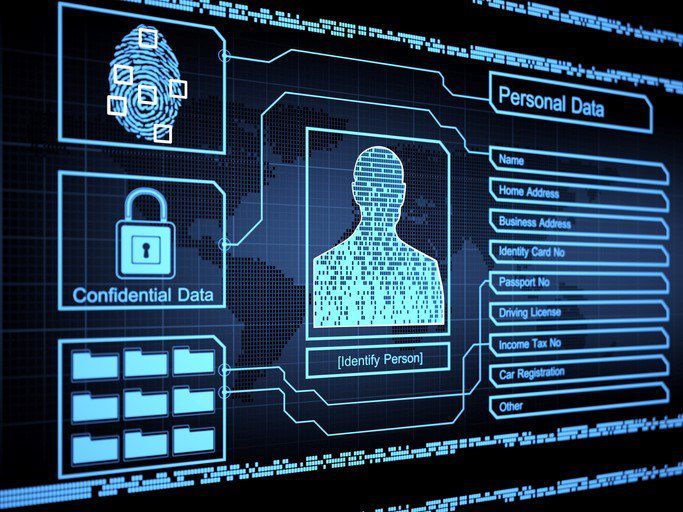In our technology-centered world, keeping your personal information and finances safe can seem impossible. To better protect you, we’ve put together a quick guide with 15 tips to keep your data private and control who sees it.

- Create strong passwords. According to a Forbes article, the Forbes Tech Council recommends using very long, memorable passwords. They cite, as an example, “My-WiFi-is-not-free-for-the-whole-neighborhood” as being a great password.
- Be wary of phishing attempts. Take a minute before reacting to any alarming email or text message asking you to take immediate action. Also, hover over any links before clicking on them; the URL will appear in the bottom corner of the browser window. Read more on how to spot a phishing scam.
- Confirm a website is secure. Especially when shopping online, look for the lock icon in the website’s URL to confirm the site utilizes Secure Sockets.
Layer (SSL) encyption and that the URL begins with “https” instead of just “http.” Be wary of sharing any information on sites in which SSL encryption is not used. - Avoid oversharing on social media. Details you share can be used by hackers to answer the challenge questions and give them access to your accounts and personal information. Never post your Social Security number, address, phone number, PIN or account numbers on publicly accessible sites.
- Set stricter privacy settings on your accounts. Limit the amount of data you share with people outside of your network and third-party companies. Privacy and data regulations can change often; it is recommended that you review your privacy settings at least once a year.
- Close accounts or services you no longer use. Social media networks come and go. When you decide you’re no longer interested in one, make sure you fully delete your account so that your data is no longer in their hands.
- Keep your GPS data private. Your location can be stored by apps including Facebook, but you can disable that function from your phone settings. iPhone users: find controls under Location Services. Android users: look under Facebook Permissions in Applications Manager.
- Turn on your device’s anti-theft. If your device is lost or stolen, your personal data is quite literally in the wrong hands. Passwords on devices can deter thieves, but there also may be settings that will erase all your data from devices if an incorrect password is entered too many times.
- Turn off services when not in use. Bluetooth, Wi-Fi, and location capabilities on smartphones are very convenient, but they’re also great ways for hackers to gain access to your data. A study released in USA Today suggests the biggest mistake people make is leaving their device’s Bluetooth “swtiched on 24/7.”
- Turn on automatic updates. While updating software can be an annoyance, it’s important to do so. Outdated software can have security loopholes that make it easier for cybercriminals to access your data. Make sure that you use the latest versions of the operating system and applications on all your devices.
- Beware of public Wi-Fi. These leave you at risk of others monitoring your internet activity, and some malware can even be transferred over Wi-Fi. Consumer Reports suggests adding public Wi-Fi networks to a “public” profile that will forget that network once you log off.
- Purchase virus protection software. Beef up your security by having a reputable antivirus program installed on your computer. Remember to regularly check for software updates to improve security. Many basic, but effective programs can be purchased at reasonable prices and are generally good for one-two years.
- Back up your data. Whether you choose software (cloud-based service) or hardware (external hard drive), make sure you have your data backed up to a secure space. This helps lower the risk of ransomware when hackers hold your data hostage for ransom.
- Check your data breach status. Visit HaveIBeenPwned.com and check to see if your account credentials have been exposed in a data breach.
- Enable multifactor (MFA) or two-step authentication (2FA). This method requires an additional level of security to access your account and could include push notifications, SMS (text) verification, voice authentication or hardware tokens.
Finally, be sure to share this with family and friends to make sure they are taking the necessary steps to protect their data too.
This article may reference and link to third party information that has been verified to the best of our abilities. There is no guarantee of accuracy. Heartland Bank does not endorse companies, services, or products referenced in its articles and is not responsible for the content, links, privacy, or security policies of these third parties. Information in the above article may include material from Keeper Blog (https://www.keepersecurity.com/blog/2023/03/09/the-importance-of-keeping-software-up-to-date/#:~:text=It%27s%20important%20to%20keep%20your,software%20is%20up%20to%20date.), Forbes (14 Personal Data Security Tips For Everyday Users (forbes.com), USA Today (https://www.usatoday.com/story/tech/columnist/komando/2023/02/26/leaving-your-phones-bluetooth-24-7-can-major-security-risk/11308150002/), Consumer Reports (66 Ways to Protect Your Privacy Right Now – Consumer Reports), and HaveIBeenPwned.com (https://haveibeenpwned.com/)
This content is for informational purposes only. Readers should under no circumstances rely upon this information as a substitute for their own research or for obtaining specific advice from their own counsel.

